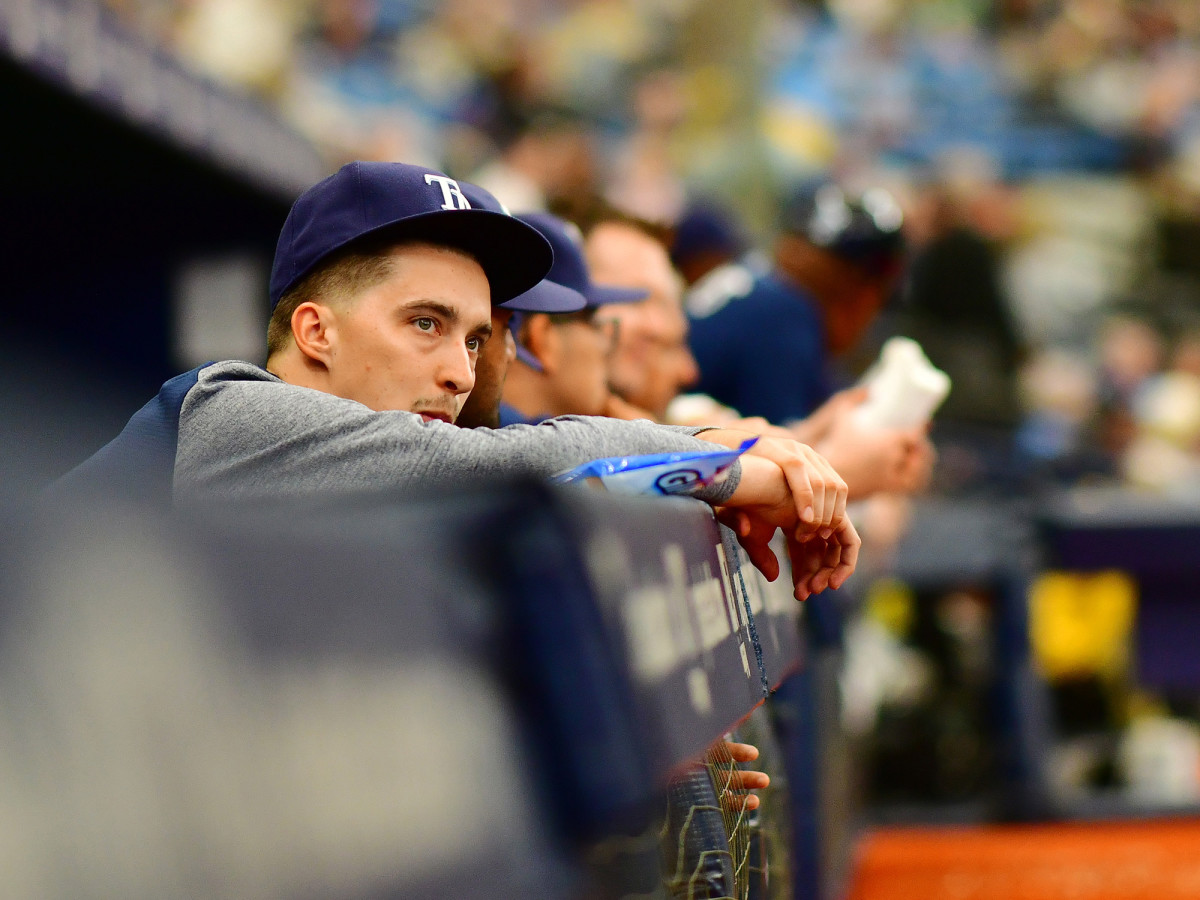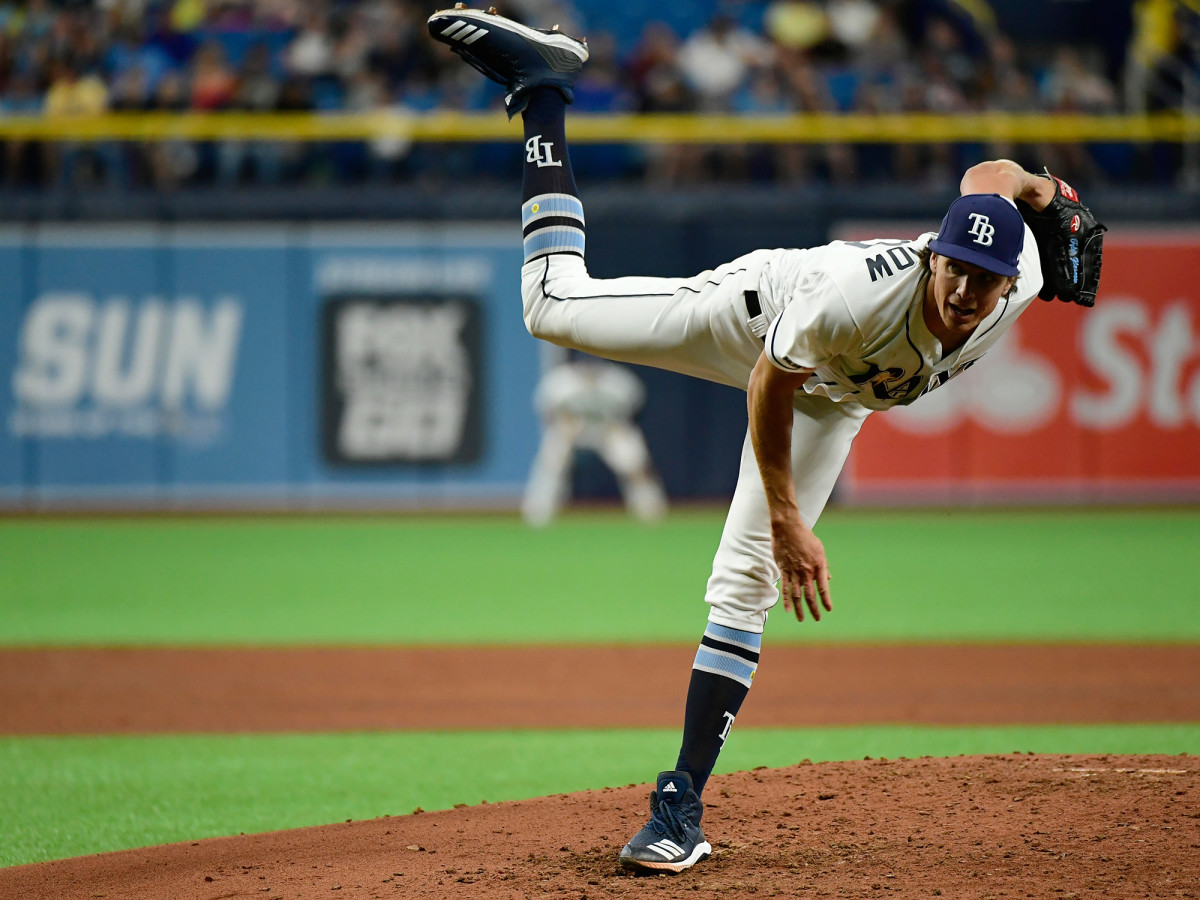What's Behind the Rays' Rise? Old-Fashioned Starting Pitching, of Course

“Who knows where it goes from here?” Rays general manager Erik Neander said last August when asked about the future of the opener, the pitching strategy that helped the upstart Rays win 90 games and challenge for a postseason spot in a year when they were widely predicted to finish below .500. The opener—more or less a bullpen day in practice, but as a regular part of the rotation—was born out of desperation and necessity. But given how well it worked, it was easy to imagine Tampa Bay not changing a thing in 2019 and rolling once again with relievers as starters.
Then again, when discussing what could change the plan going forward, Neander suggested one possible caveat. “If we have five Blake Snells, they’re all going to be starting and carrying a starter’s workload,” he said, referring to his 25-year-old lefty ace who won the Cy Young Award. (It’s worth noting here that the opener likely wouldn’t have had nearly as large an impact if it weren’t for Snell steadily doing his best Doc Gooden impression every fifth day.)
Neander was being facetious, but so far in 2019, he’s gotten pretty close to his ideal scenario. In Snell, Charlie Morton and Tyler Glasnow, the Rays are rolling out a rotation that is the envy of baseball, as they’ve combined for a 1.81 ERA in 69 2/3 innings, essentially forming a three-headed Snell (or perhaps Snellberus, as it were). And while Tampa hasn’t abandoned the opener—reliever Ryne Stanek, who made 29 starts last season but threw just 66 1/3 innings, has started four of the team’s 18 games so far—the shape of its success has been far more traditional thanks to that group. With that trio leading the way, the Rays have morphed into MLB’s best team: 14–4, a 5 1/2-game lead in the AL East over the Yankees, and both the league’s best run differential (+47) and fewest runs allowed (43).

Fittingly, it all starts with Snell. You would’ve been forgiven to think that he couldn’t replicate the award-winning 2018 that he put together, but if anything, he’s actually improved upon it. His strikeout rate is up (31.6% to 40.4), his walk rate has been cut in half (9.1 to 4.5), and he’s getting more swings and misses while giving up fewer hard-hit balls. Just as impressive is that he’s working in the strike zone more while giving up less contact.
What’s keying the change for Snell is an increased emphasis on his curveball and a change in usage of his four-seam fastball. He’s throwing the former more often—31.9% of the time, up from 20.2 last year, though that trend began last September—and in different situations. It’s displaced his heater as his primary two-strike weapon, particularly against same-side hitters, and he’s throwing it more often early in the count, too. On top of that, he’s upped its frequency against lefties, who are hitting just .154 against it. (Not that anyone on either side of the plate has handled that pitch well: Opposing batters have a meager .152 average versus the curve and a whiff rate of 58.0%.) As for the fastball, he’s throwing it less but for more strikes and getting more swings and misses with it.
Snell isn’t the only Rays starter embracing the curve. So, too, has new arrival Charlie Morton, the 35-year-old veteran who, amazingly, represents the biggest free-agent expenditure in franchise history with the two-year, $30 million deal he signed this winter.
The former Astros righty, whose career was revamped and resuscitated in Houston, seemed like a perfect fit on paper for the equally data-savvy Rays. That’s been the case in the early going, as he boasts a 2.18 ERA and 25 strikeouts in 20 2/3 innings. Like Snell, the curveball is his top offspeed pitch, but with Tampa, he’s made it his go-to offering, throwing it more than his four-seamer or sinker. Batters are just as flummoxed by it as they are by Snell’s, hitting .108 against it with a whiff rate of 45.3%. And like Snell, he’s changed how and when he uses his curveball, particularly against same-sided hitters (per BrooksBaseball).
Morton's Curveball Usage vs. Righthanded Hitters
| All Counts | Pitcher Ahead in Count | Two Strikes |
|---|---|---|---|
2018 | 23% | 28% | 33% |
2019 | 37% | 50% | 67% |
That was a sensible choice. After all, righthanders hit just .125 with a whiff rate of 44.9% against Morton’s curveball in 2018, yet they managed a .282 line against his sinker, which he threw twice as often. It’d be downright foolish not to use that pitch more often against righties, and the results bear out the wisdom of that strategy, as they’re hitting a puny .044 against the curve so far this season.
Rounding out the group is Glasnow, one of three pieces snagged from the Pirates in last summer’s Chris Archer trade. A high-pedigree arm with stuff for days, the long-limbed righty (he stands a gargantuan 6’8”) couldn’t find consistency in Pittsburgh, failing to harness his high-octane fastball and struggling with his control and command. He took a small step forward in the back half of 2018 with Tampa in that respect, but 2019 has been a giant leap, as he’s walked just three batters in 24 innings and is posting career-high marks in strike percentage and percentage of pitches in the strike zone. He’s also massively cut his home-run rate, allowing only one so far after giving up 10 in 55 2/3 innings last year with the Rays.
You win nothing if you guess what major change Glasnow has made in 2019. As with Snell and Morton, the 25-year-old has turned to the curveball, throwing it 27.0% of the time compared to last season’s 18.9. That’s more in line with 2017, when its usage rate was at 22.8%, but one key difference between that year and this one is that Glasnow has more or less abandoned his sinker. Per Statcast, he didn’t throw a single sinker last year, and he’s tossed only one this season. That’s probably for the best: Opposing batters obliterated that pitch in ’17, hitting .431 with a .696 slugging percentage against it. That pitch is a favorite of the Pirates and pitching coach Ray Searage, but it’s a poor fit for the launch angle era of baseball, when hitters have become adept at golfing balls low in the strike zone for line drives and home runs.

Glasnow is better off hurling curveballs, and not just because it’s harder to hit breaking pitches than it is fastballs. The righty boasts one of the highest spin curves in baseball: 2,817 revolutions per minute, which ranks in the 92nd percentile of the league. Also high up in that category: Morton, whose Uncle Charlie is averaging 2,874 rpm this season, good for 12th highest in the game. (Snell isn’t quite at their level at 2,568 rpm, but that’s mitigated by the fact that he’s good at literally everything else.) Curveballs with more spin usually get weaker contact, often on the ground, and they’re damn near impossible to lift. Fittingly, both Morton and Glasnow boast high ground-ball rates, low home-run rates, and strong average exit velocities. It helps, of course, that both of them throw hard fastballs—Morton’s averages 94.3 mph, Glasnow’s sits at 96.5—to keep hitters perpetually off-balance.
Put it all together, and you have a rotation—or at least 60% of one—that is more or less Neander’s hypothetical come to life. And it’s a group that could conceivably improve if top prospects Brent Honeywell and Jose De Leon return in good form from Tommy John surgery, perhaps around midseason (though it’s more likely you’d see both of them fit into an opener-style strategy of throwing a few innings per start before giving way to a reliever).
The opener isn’t dead. Even with Snell, Morton and Glasnow firing on all cylinders, the Rays still don’t have a full rotation, and barring a trade, they probably won’t any time soon. The strategy will live on. But unlike last year, it’s not a standout factor in Tampa’s success. Instead, the Rays are winning thanks to something even more unusual for them: old-fashioned starting pitching.
